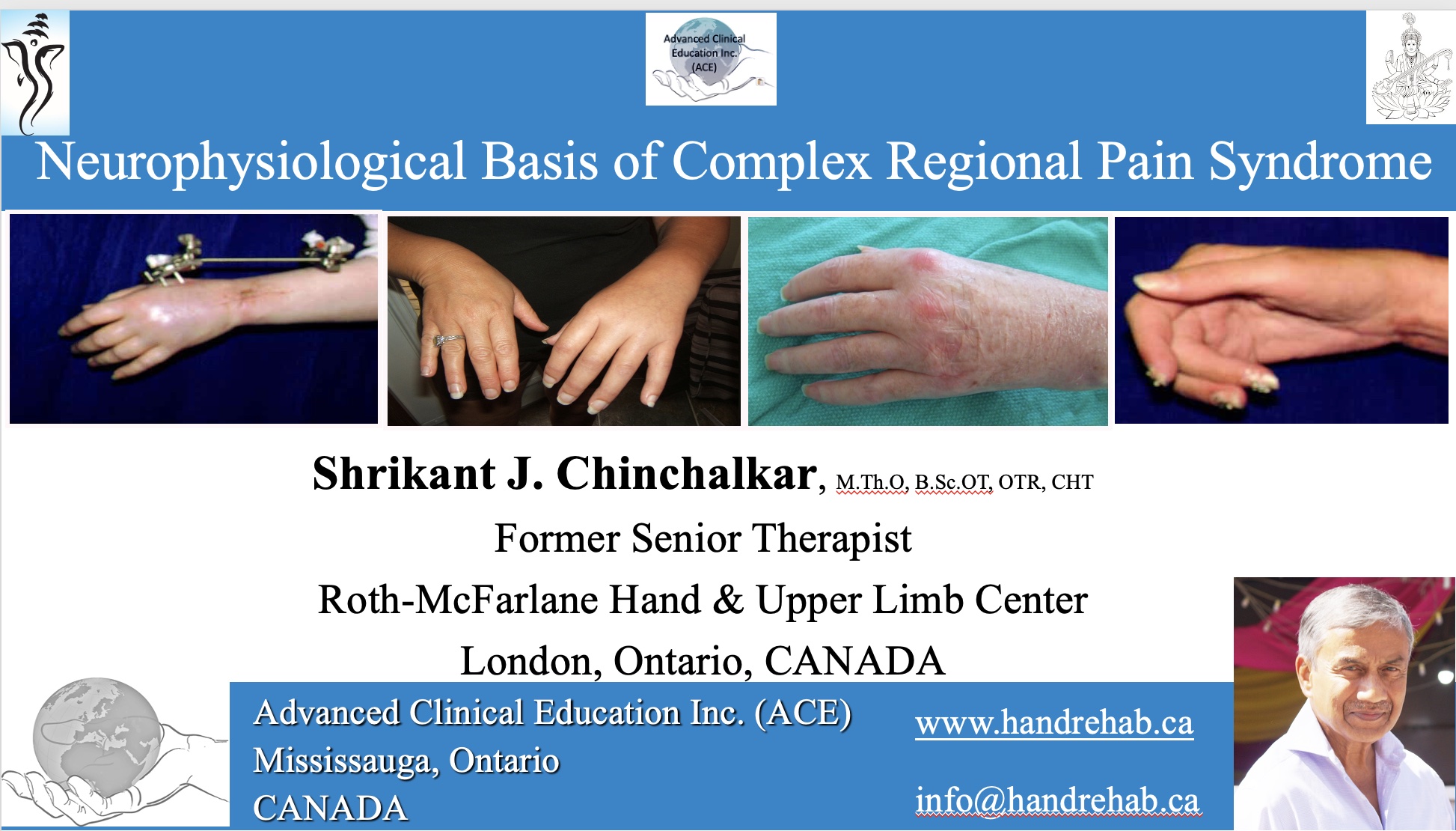Presented by: Shrikant J. Chinchalkar, OTR., CHT
| Webinar Dates | June 23rd, 2023 – 3.00 pm – 5.00 pm EST |
| Please Note – Before Registering for the Event | The scheduled webinar time is in Eastern Time Zone (EST). Please check your local date and time that corresponds with the EST time Zone in your city and country. |
Webinar Description:
Complex regional pain syndrome occurs because of injury or surgery. This condition is characterized by autonomic and inflammatory features. The extremity often presents with vasodilatation – “warm” with inflammatory to vasoconstriction, – a “cold” characteristic, producing drastic extremity temperature
fluctuation. According to the international Association for the Study of Pain (IASP) diagnostic criteria for CRPS, it is divided into three types: I, II and III. The Harden/Bruehl (Budapest Criteria) and The Veldman criteria are commonly used for differential diagnoses of CRPS. Peripheral and central sensitization associated with autonomic changes contribute to abnormal central nervous system influencing the functioning of involved extremity. The clinical presentation comprises of a clinical triad of symptoms including autonomic, sensory, and motor disturbances. Patients often develop Kinesophobia resulting into a loss of joint motion, extremity function and ultimately the central nervous system dysfunction affecting
cortical plasticity. Effective management of the syndrome is based on detailed understanding of stage wise patho-and-neurophysiology of the symptoms and neurophysiological based interventions to maximize results. The management of CRPS includes multi-interventional therapy, graded motor
imagery, mirror therapy and multidisciplinary clinical care. A systematic exercise training for CRPS alleviates pain and improves physical function stimulating central nervous system activity. This helps improve remodeling of abnormal central and peripheral nervous system by inducing vasoregulation.
This attained change, collectively increases adrenaline levels, release of endogenous opioids, and the increased anti-inflammatory cytokines which centers around functionally focused therapies to facilitate to improve quality of life.
Webinar Objectives:
Upon completion of the webinar the participants will have:
- A thorough knowledge of CRPS pathophysiology and understand Budapest and Veldman’s diagnostic criteria.
- An understanding on normal physiology of joint motion and how it is affected due to the CRPS.
- An understanding of physiology of pain and its effect on vascular, musculo-tendinous and neurophysiological tissue reaction
- An understanding of activating central nervous system and producing its influence in minimizing pain and gaining desired motion and function
- An understanding of thermal biofeedback, graded motor imagery, mirror therapy, stress loading, and exercise physiology in restoring function in CRPS.
- An ability to plan evidence based precise therapeutic intervention to maximize the functional outcome.
This Webinar Constitutes 2.0 CEU Credit
All content of this webinar series is accepted as Category A credit toward recertification by The Hand Therapy Certification Commission (HTCC).
| Registration Fees | $35.00 USD (Limited Seating) |
| Contact Us: | E-mail: [email protected] Tel No: +1-289-232-4669 |
| Important | Please create Microsoft Teams Account prior to registering for the course. |

